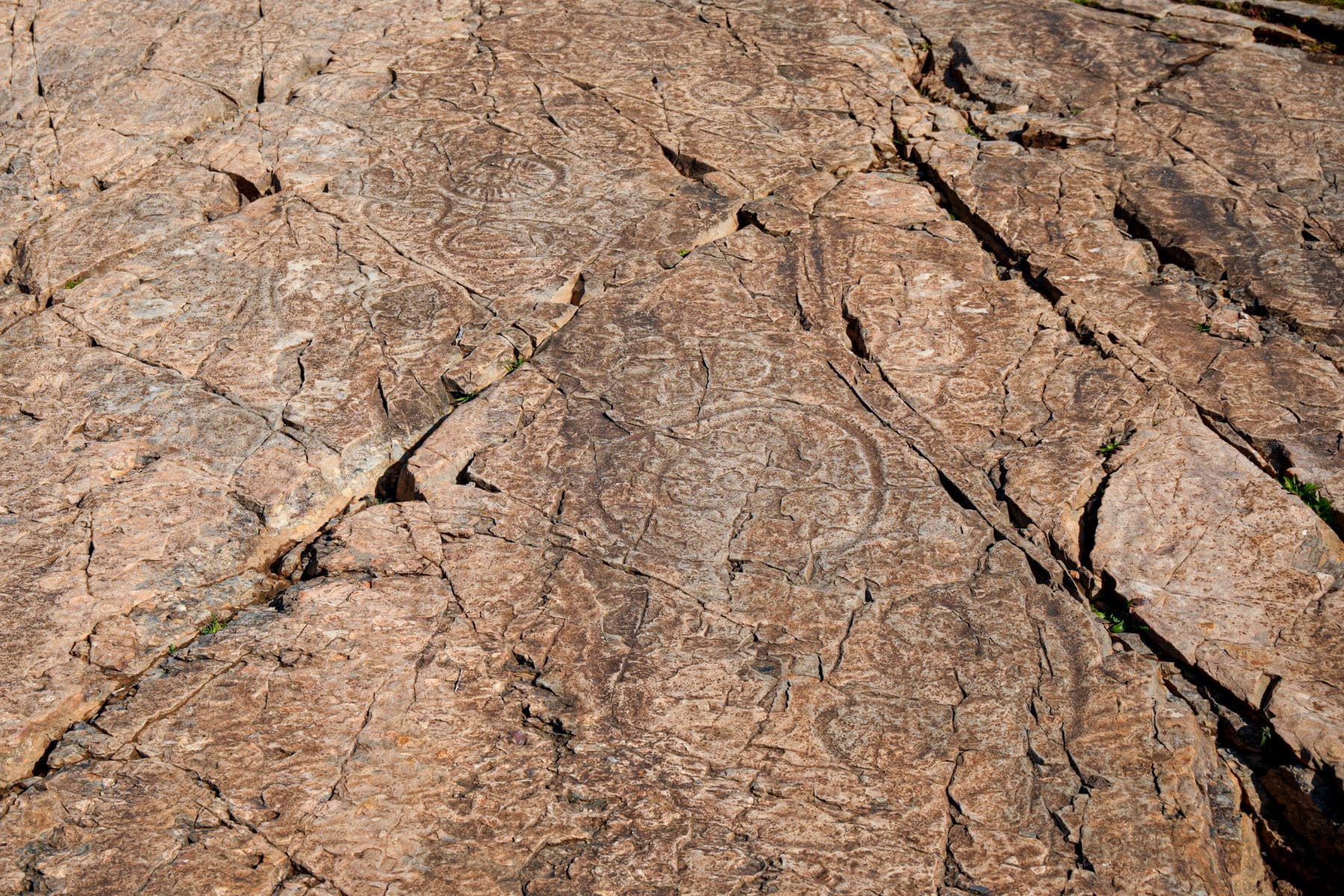The natural monument of the Fossil traces of Medusas from Constantina are located in the Lower Cambrian paleontological site of Medusasabout two kilometers from the Cerro de la Víbora area, in the Sierra Norte de Sevilla Natural Park, in the town of the same name.
It forms the largest collection of Cambrian fossils in Europebecause it houses hundreds of jellyfish fossils, some up to 88 centimeters in diameter, all of high quality and more than 550 million years old, from the time this area was under the sea.
Paleontological find in the Sierra Morena Natural Park
He The Sierra Morena Natural Park in Seville is witnessing a transcendental event for world paleontology. The Minister of Sustainability and Environment of the Regional Government of Andalusia, Catalina García, has visited the completed works to improve the footprint of the Jellyfish Natural Monument, located in the municipality of Constantina. This site paleontological, which houses a total of 289 fossil jellyfish prints from coelenterate hydrozoans, is classified as the most important in the world in its category.


During the visit, Catalina García emphasized that “this paleontological jewel puts Andalusia on the map of world science and strengthens our commitment to the conservation and improvement of the Andalusian natural heritage.” In addition, has emphasized that the cleaning and restoration work is taking placeinvolving a total investment of 296,570.13 euros, have made it possible to reveal a finding of exceptional scientific relevance.
The site paleontological of Constantine is distinguished by its antiquity, dates from about 540 million years ago, in the early Cambrianand by the number and size of prints saved. These prints, which vary in diameter between 10 and 120 centimeters, correspond to a single species, Cordubia gigantea, and are considerably larger and more numerous than those found at other comparable locations, such as those in California (13 specimens to 21 centimeters). and China (fossil bodies of only one centimeter).
“The footprint of the Jellyfish Natural Monument is a testimony to the origins of life on our planet, as well as a source of invaluable for scientific research and environmental education”, said the advisor. This enclave will allow progress in the paleobiological reconstruction of the species, as well as in the understanding of the paleoenvironmental conditions and the processes that gave rise to this exceptional accumulation of jellyfish.
The project was made possible thanks to a cooperation agreement between the Department of Sustainability and the owners of the private land where the paleontological site is located. “This kind synergies between public administration and the private sector “They are fundamental to guarantee the preservation and access to scientific knowledge for all citizens,” says Catalina García.
The IAPH has been overseeing and directing the clean-up and restoration work at the site paleontological, via Tragsa. This objective was specifically promoted by Eloísa Bernáldez, a Doctor of Biology from the University of Seville of recognized international prestige and awarded the Flag of Andalusia in the province of Seville. Bernáldez pointed out during the visit that the current conditions of the outcrop will allow a more precise examination of the Earth’s surface. paleobiological characteristics of jellyfish and the conditions that led to their accumulation.
Preliminary research indicates that these jellyfish do occur died en masse due to episodes of ecological stress in a shallow sublittoral marine environment during the first transgressive episode of the base of the Cambrian. Later, at the end of the Paleozoic (about 380 million years ago), tectonic movements during the Variscan orogeny (which lasted about 100 million years) caused the final withdrawal of the sea, uplifting and folding of the rock layers, giving rise to the access flow. For his part, Professor Eduardo Jesús Mayoral Alfaro, professor of paleontology at the University of Huelva, certified the discovery.
Ecotourism local impulse
The advisor also emphasized the positive impact of this finding paleontological can have inside the local economy and promotes ecotourism and positioning Constantina as a reference destination for nature and science lovers. “We will continue to work to make these types of spaces accessible and contribute to the sustainable development of rural areas,” he assured.
“With this new discovery We reaffirm our commitment to protecting the environment and the promotion of initiatives that value Andalusia’s exceptional natural heritage. The footprint of the Jellyfish Natural Monument is a testimony to our planet’s ancient past and a bridge to a more sustainable future that recognizes the importance of preserving our natural legacy,” he continued.
During the visit, Catalina García shared the actions that the Government of Andalusia has carried out or is underway in the Sierra Morena Natural Park in Seville. Among the most notable actions are the almost 2.3 million euros that have already been implemented in the improvement of livestock routes in municipalities such as Alanís, El Real de la Jara or Almadén de la Plata. In addition, new projects are underway, including: the improvement of forest roads and the development of tourist information pointswith an amount of almost 2.5 million euros.

